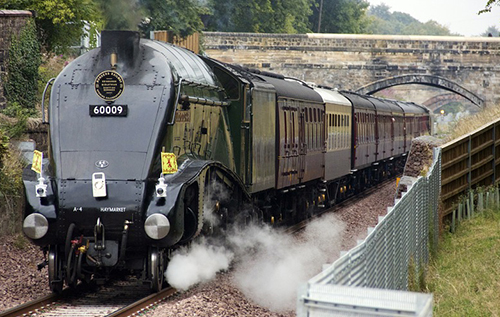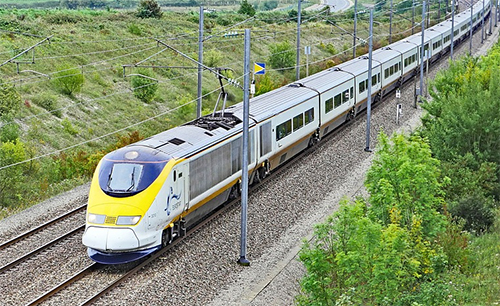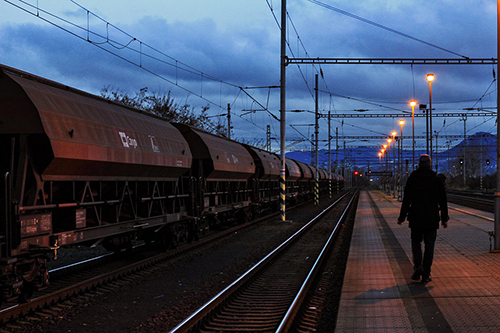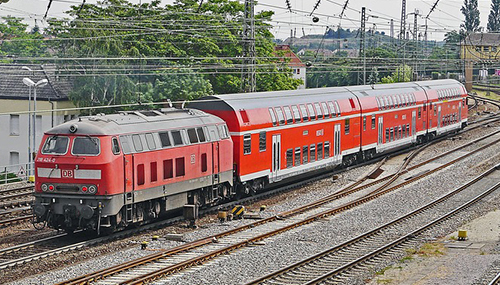

 JOHN CHANDLER brings us the news from the end of the platform.
JOHN CHANDLER brings us the news from the end of the platform.
Many of you will be familiar with the name of Ian Allan.
In 1942, whilst working in the Public Relations Department for Southern Railways based at Waterloo Station, he realised that the majority of correspondence that he received was asking about the performance and specification of Southern’s locomotives and, rather than repeating the same information for every reply, he hit on the idea of publishing it in a book. The ABC of Southern Railways locospotters’ guide was born.
As a result, not only were the enthusiasts better informed about the individual classes of locomotives, they now had a list of the identities of same, be it running number and/or name. This gave rise to the common sight of groups of (usually) young boys standing at the end of platforms armed with book, pen and (occasionally) camera noting the locomotives they saw.
This was only the beginning!
Given my own experience on charter tours, in discussions with former railway employees and personal observations (whilst happily watching trains go by, of course!), I believe that there are at least 8 categories of Train Spotter today. If you have come across others, I would be interested to learn about them!
To a large extent, this is where I would classify myself; I enjoy train travel and have a reasonable understanding of how the railways work from the operating diagrams to the signalling. Whilst I could identify with all of the following categories, I would not sit firmly in any of them.
The archetypal railway enthusiast! Thanks to Ian Allan (there are now several other publishers producing such books), book in hand at the end of the platform checking off the numbers. Not so much young folks these days but those that started in their youth and have continued their enthusiasm. Proof, if any was needed, that whilst growing old may be mandatory - growing up is optional. I feel that this phrase should be prominently displayed in our shop!

Do preserved locomotives count?
This is possibly best described as a Loco Spotter on steroids! Not only is the loco number noted but also the distance the Clicker is hauled by said loco is also recorded. Several of my friends maintain spreadsheets of such information and even have their own vocabulary associated with it. A Needer is a locomotive which has not yet opened its account whilst Mouldy generally describes a loco that has several entries in the spreadsheet.
As the Spotters’ Guides have diversified, so have the spotters. Every vehicle on the railways carries an unique identification number (UIC ERA EVN VKM - European Stock Numbering). Coupled with the use of small, portable dictation recorders, it is now practical to record the numbers of the coaches as they pass by.

Longer consists may take some time to record...
Although I have not (yet) come across any publications which reference freight wagons, the comments made for Coach Spotter also apply to this category. I was told a story by a former railway employee about a Freight Wagon Spotter who regularly visited Erstfeld station in Switzerland, at the start of the ramp up to the original Gotthard Tunnel and where a banking locomotive would often be added. Trains, on average of 104 axles (26 wagons) would arrive in the station awaiting their banker. On one occasion the Spotter was walking the train, recording the numbers of the wagons when the driver invites him for a cab ride to Goschenen which, reluctantly, he accepts. Reluctantly because he has not finished recording the train!

Don't creep around freight yards at night...
This category (and the next) are not generally seen carrying books of numbers but more railway atlases, of which several are available. Often using highlighter pens, they record for each journey any new track over which they have travelled. As mentioned under the category of Generalist of not sitting in any other categories, whilst not on paper, I am conscious of having traversed all arms of the local Arundel Triangle including the crossover just beyond Arundel station; I have yet to do the crossover at Ford!
Like Loco Clickers, these are Track Bashers on steroids! Not only recording the track which they traverse, they insist on, if necessary, walking to the buffers to ensure that they have covered the whole line. On my first Charter Tour in Switzerland, the driver made a point of crashing into the buffers at Kandersteg as he knew the mix of his passengers (That was also my first cab ride!)

This is a slightly diverse category in that they do not need books of numbers or atlases, only a notepad, pen and stop watch. Queen Victoria was an original timer; in the UK, there are mile posts every ¼ mile (other countries may use 0.1km spacing) and, using a stop watch, it is possible to calculate the average speed of the train between posts.
In the early days of train travel, it was believed that travelling faster than 30mph would cause death by asphyxiation. Her Majesty was suitably equipped with stop watch, paper and pen and thus monitored her train’s speed. There is one famous exception to this; after her passing at Osborne House on the Isle of Wight, she was conveyed to Whippingham Station for her final journey to London; operating a stop watch was a little beyond her capability. However, it may come as no surprise that there is a society dedicated to continuing this practice and publishing tables of recorded data, The Railway Performance Society. (30mph over ¼ mile takes 30 seconds.)
I accept that this list may not be exhaustive and there may well be other categories of Train Spotter out there. I’m always willing to learn!
Can you think of any others? If yes, please Contact Us and remember, always take care around trains and the platform edge.